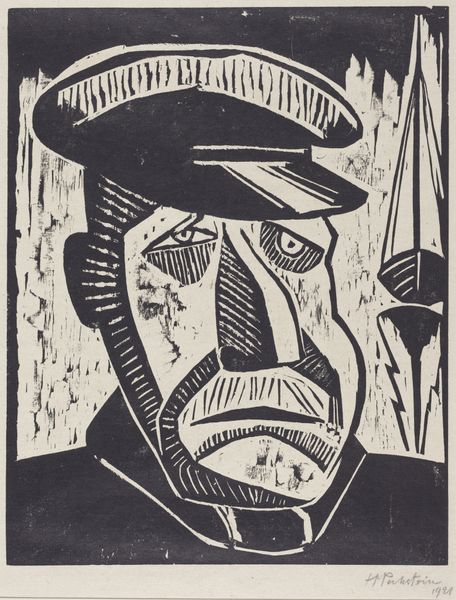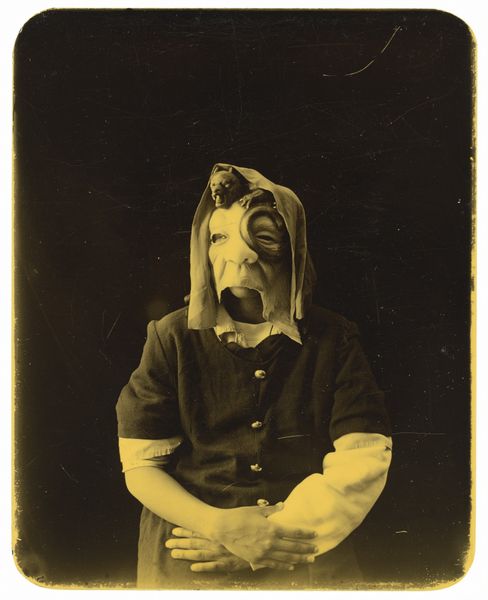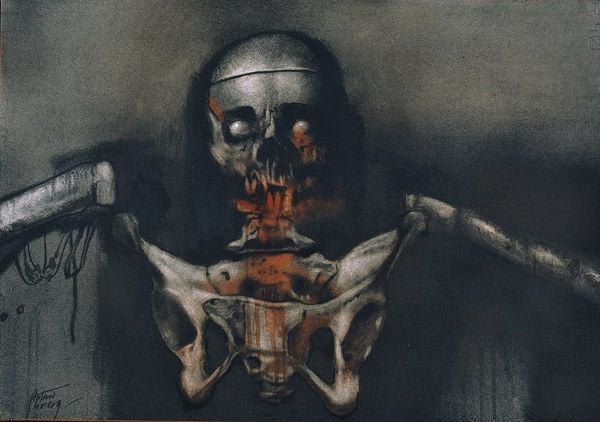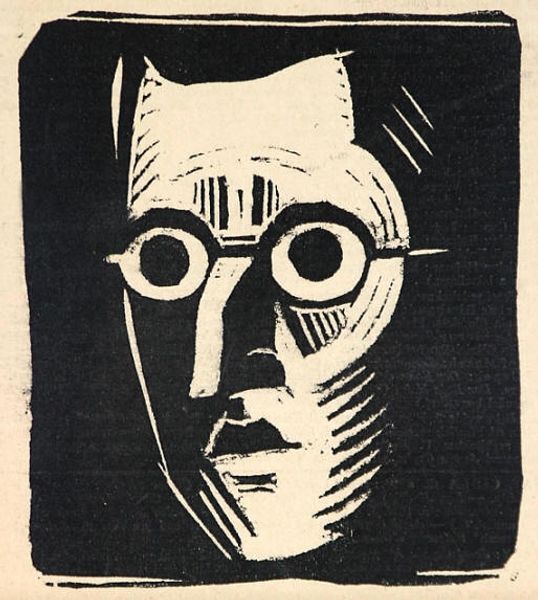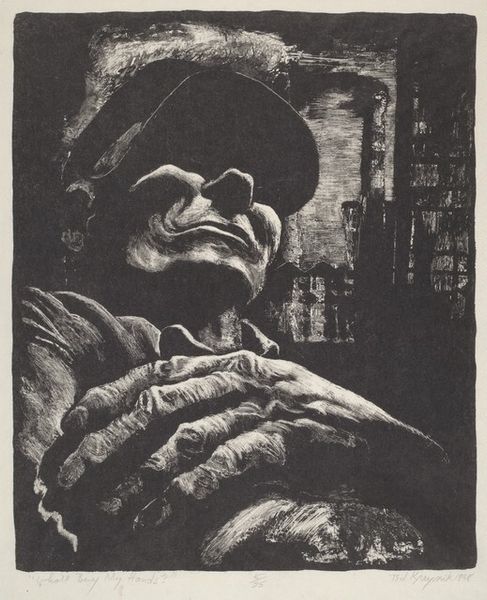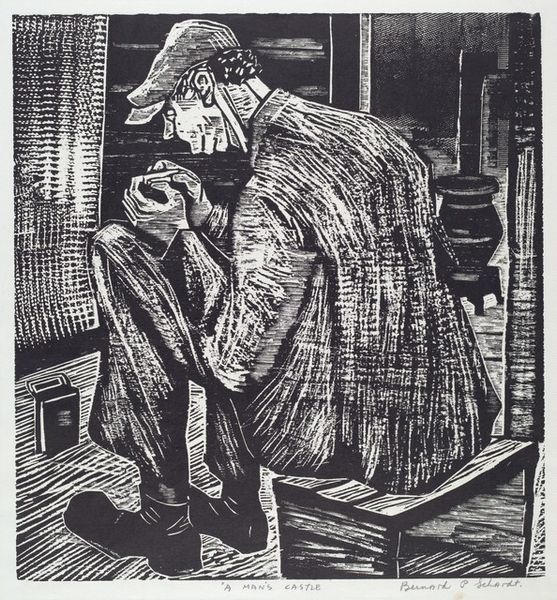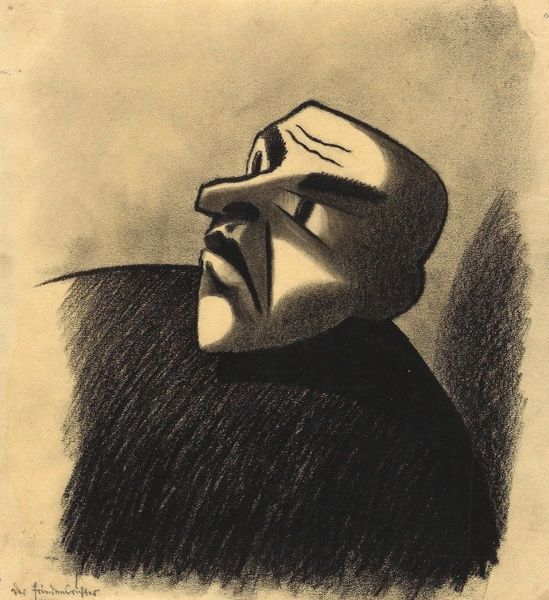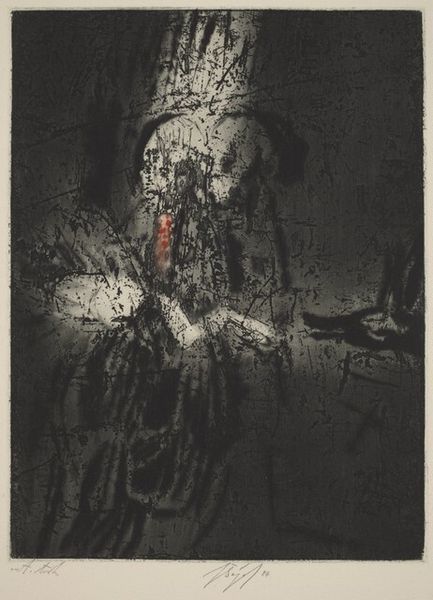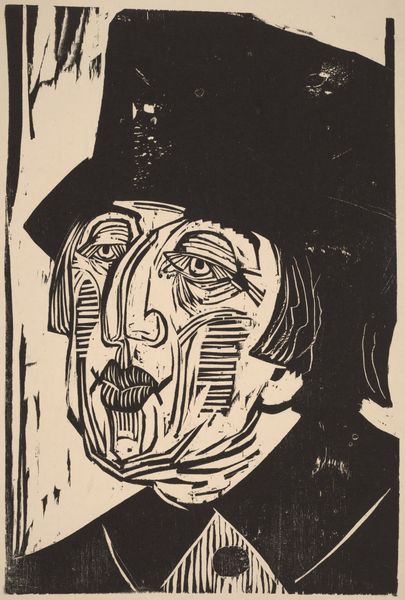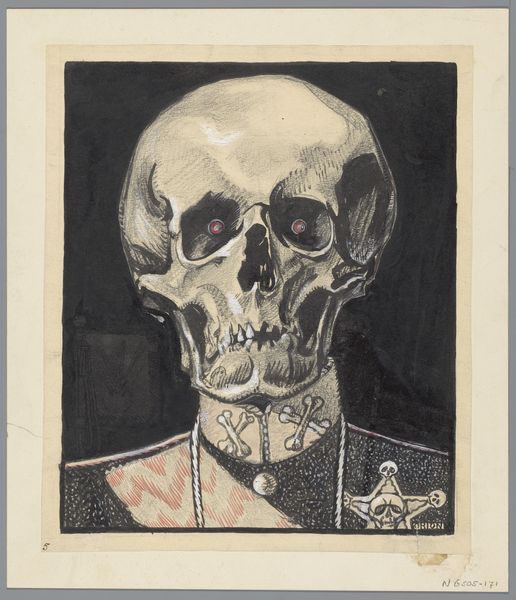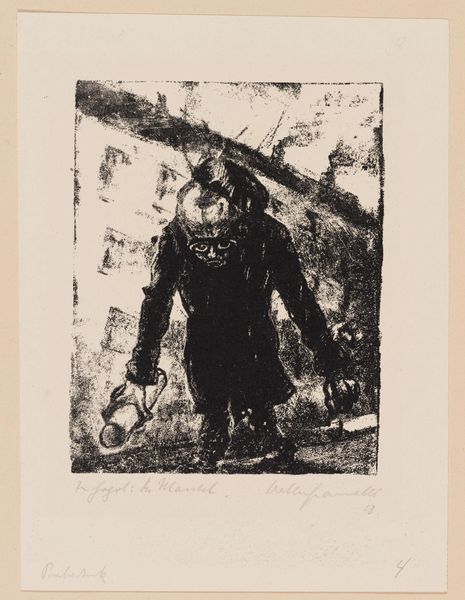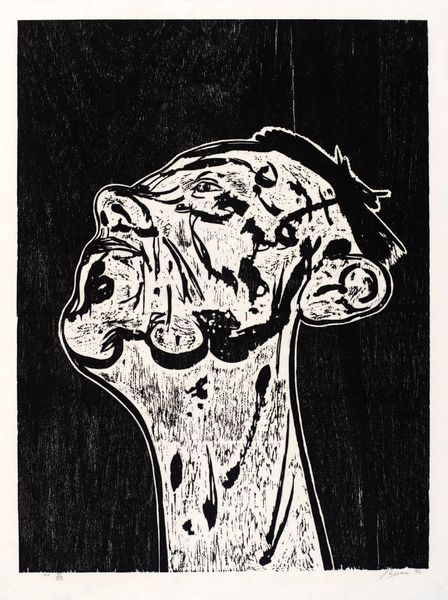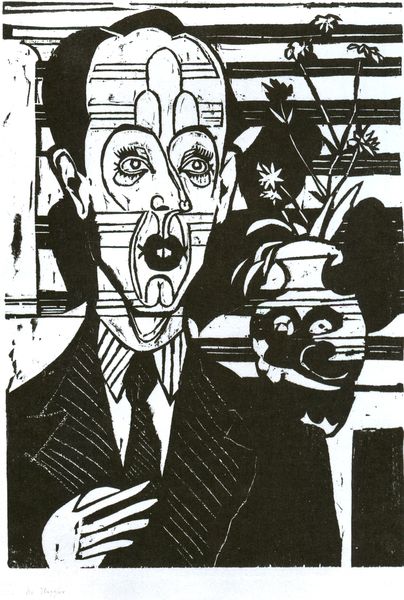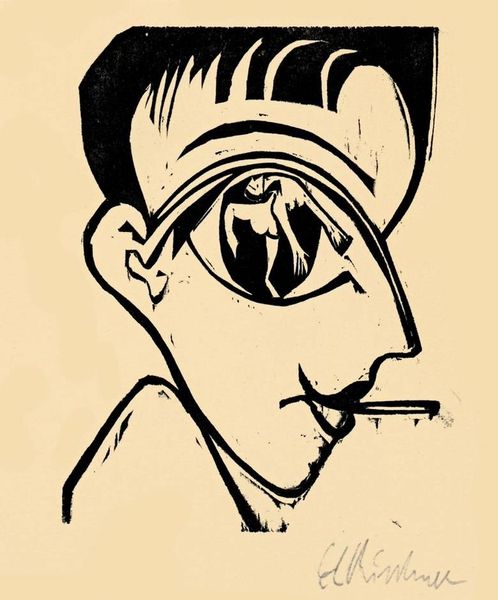
Dimensions: image: 283 x 296 mm sheet: 406 x 360 mm
Copyright: National Gallery of Art: CC0 1.0
Curator: Oh, wow, that's unsettling. Like something from a bad dream, all harsh angles and this oppressive stillness. Is it a photograph? Editor: This image, whose title remains simply *Untitled (Soldier with Gas Mask)*, is, in fact, a compelling print—likely an etching or woodcut, placing its creation around the early to mid-20th century. Edward C. Smith is the artist responsible for its disquieting imagery. Curator: It’s the eyes, or rather, the lack of them. Those gaping goggles—they turn the face into this… insectile mask. He's like an anonymous automaton. And the fedora, I wouldn’t have placed that there. It shouldn’t work, but it gives the figure another dimension. Editor: Yes, precisely. That juxtaposition speaks volumes, doesn’t it? Smith's choice to adorn the soldier with a civilian-esque fedora, combined with the dehumanizing gas mask, throws into sharp relief the tension between individual identity and the brutal machinery of war. Consider the context: the rise of chemical warfare in the 20th century stripped soldiers of their humanity. This portrait challenges conventional heroism. It is a disturbing account about what it meant to be an expendable cog in that deadly system. Curator: I find myself thinking about the artist, actually. The person behind that grim vision. Did Smith experience the war firsthand, or was this a response to what he’d seen and heard? Because you feel the emotion. The piece pulsates with dread. You're drawn right in! Editor: Unfortunately, detailed biographical information about Smith remains scant. However, artworks like this speak powerfully to the widespread anxiety and disillusionment permeating society between and after the great wars. Notice the German Expressionist influence. These choices helped depict not objective reality, but the internal, often tortured experience of it. It is a visceral approach. Curator: Right. He took that exterior horror and put his finger directly on what it did to your insides. The facelessness, the paranoia… the sheer strangeness. So powerful and timely, sadly. What do you take away from it all? Editor: For me, Smith's print serves as a potent reminder of the ever-present need to question power, to resist the forces that seek to erase individuality and incite violence. It's a call to remember history, in order to safeguard the future. Curator: Beautifully said. And I see now why that fedora struck such a chord. This isn't a celebration of soldiers, but it sure humanizes them. It gives the men their souls back, somehow, even when their faces are hidden.
Comments
No comments
Be the first to comment and join the conversation on the ultimate creative platform.
